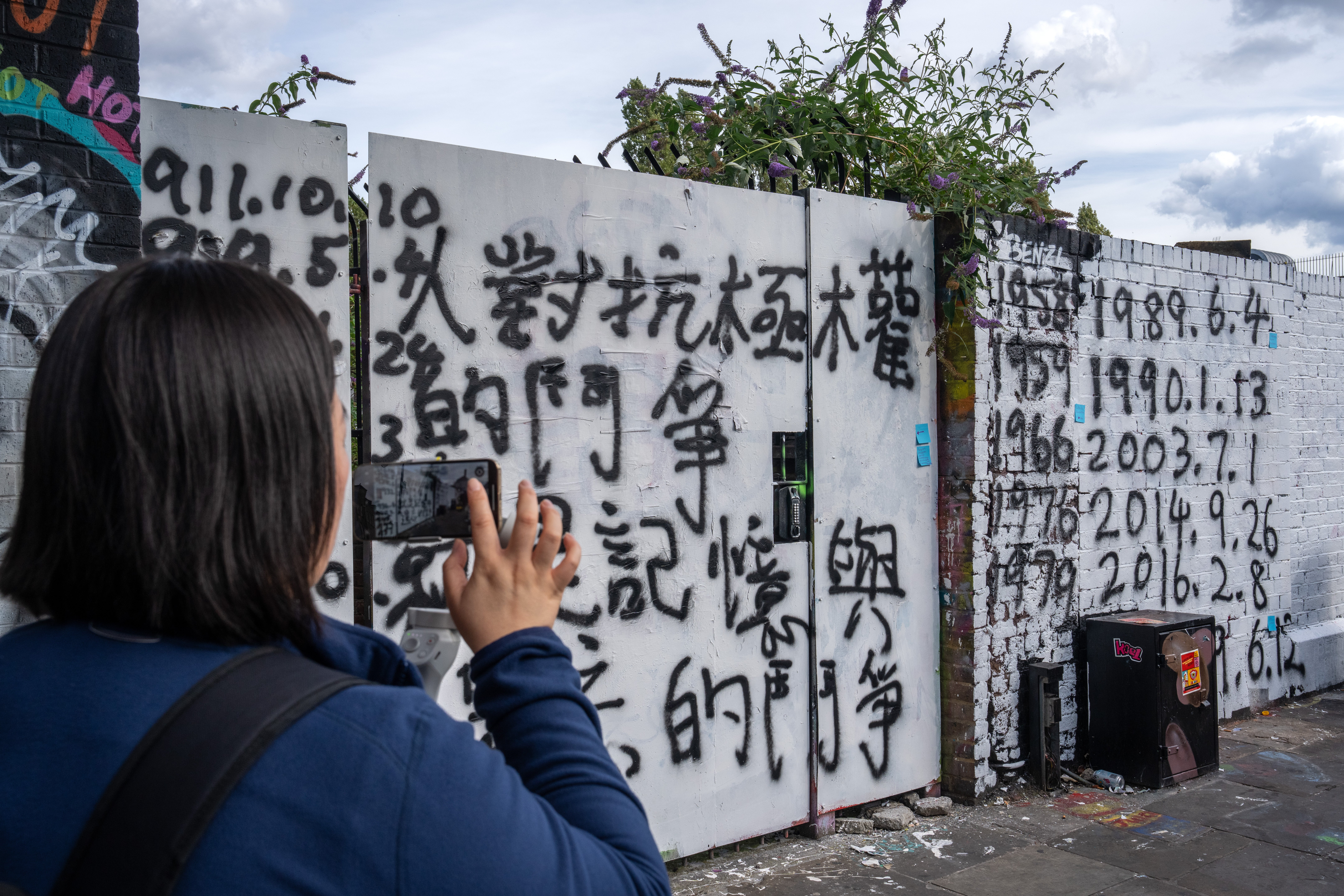Brick Lane is known for its vibrance, lively markets, and public space art. But this week, it sees itself at the centre of a graffiti war between supporters and opponents of China’s Communist Party (CCP).
When online videos showed a group of artists spray-painting political slogans in big red Chinese characters on a nearly 100m long wall on Brick Lane on Saturday, it provoked debate over whether they count as street art — and the relationship between freedom of expression and political propaganda.
The “core socialist values” composed of 12 two-character words and are said to be the most common political slogans under President Xi Jinping’s rule, who is at the heart of CCP propaganda. The values include, “prosperity”, “patriotism” and “harmony”, “democracy”, “equality”, “freedom” and “the rule of law”.
This led to backlash and critique on social media, with another section of artists covering it with anti-Beijing slogans. And the CCP slogan overlaid with mantras linked to Chinese rule that read “Free Taiwan”, “Free Tibet”, “Free Uyghur” and references to the Tiananmen Square massacre.
Hello from Brick Lane!
— Kit Y (@itskityaulee) August 6, 2023
Woke up bright and early to check out this mad graffiti in Brick Lane (Shoreditch) that has sparked quite a huge backlash from local art community and Chinese community.
Note the ‘No Xi Dictatorship’ sticker stuck in between 愛國 pic.twitter.com/qxFqGFI5c7
Some also added “no” on top of the grafitti, or posted other messages or images taking issue with the spray-painted words.
Wang Hanzheng, one of the creators who also goes by the name Yi Que for his artworks, claimed the original piece “didn’t have much political meaning”.
In an Instagram photo post, Mr Wang wrote in Chinese saying the group used the political elements as a coat “to discuss different environments”.

“In the name of freedom and democracy, it illustrates the cultural centre of the West, this is London’s freedom… Decolonize the false freedom of the West with the construction of socialism, let’s see what happens,” the post reads.
“Needless to say what’s the situation on the other side,” he added.
But people hit back at Mr Wang in the comments of his Instagram posts. A top-liked comment read: “Obstructing freedom of speech is not a part of freedom of speech. The jargons you used cannot justify your brutal destruction of other people’s art.”

While another commenter questioned if Mr Wang would write graffiti in Beijing and wrote, “Do you dare to go to Beijing and write democracy and freedom? If you dare, the home country you love will dare to arrest you.”
Benedict Rogers, head of the rights group Hong Kong Watch, was critical of the graffiti on Brick Lane.
I utterly condemn the #CCP thugs who defaced London’s Brick Lane with their regime’s vile hate-filled propaganda
— Benedict Rogers 羅傑斯 (@benedictrogers) August 6, 2023
I wholeheartedly applaud, support & stand in solidarity with the brave mainland Chinese who stood up against this and responded with counter-graffiti in Brick Lane! pic.twitter.com/P24fkuUMbs
“I utterly condemn the #CCP thugs who defaced London’s Brick Lane with their regime’s vile hate-filled propaganda,” he said.
On Monday, just when the graffiti war was settling down, residents woke up to the wall being completely painted over by the Tower Hamlets council. Residents were upset that they had also lost some older slogans, including a piece of graffiti art that was a tribute to the late street artist Marty.
The wall has created much-needed conversations around street art, freedom of expression, and political propaganda, and a space for people to openly voice criticisms for and against the Chinese government.







